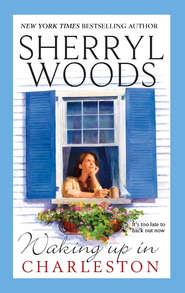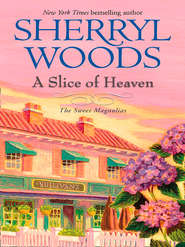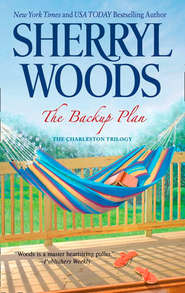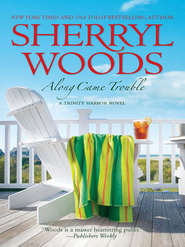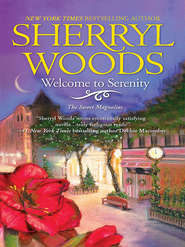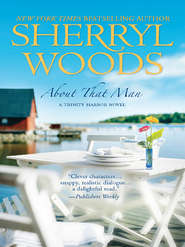По всем вопросам обращайтесь на: info@litportal.ru
(©) 2003-2024.
✖
A Small Town Love Story: Colonial Beach, Virginia
Настройки чтения
Размер шрифта
Высота строк
Поля
Even in those very early years, the full-time residents of Colonial Beach sought out spiritual guidance. The first formal congregation was interdenominational. Founded in the 1880s, Union Church met in various places until it erected its own building, where the Methodist Church sits now, at the corner of Washington Avenue and Boundary Street. Baptists, Catholics, Episcopalians and Methodists all worshipped there until each congregation built its own structure. The Baptist church opened in 1896, followed by the Catholic church in 1906. St. Mary’s Episcopal Church opened its doors in 1911. St. Mary’s also houses the only pipe organ in town, donated in 1941 by a family that purchased it from a church in Washington that was closing.
Patsy and Mrs. Hall at an early location of Hall’s Store
Westmoreland Drugstore, 1940s
One former resident, a Baptist herself, recalls filling in as organist at St. Mary’s for her music teacher, Mrs. Van Laer, in the 1950s after Mrs. Van Laer had a heart attack. Grace Roble Dirling was only thirteen at the time and ended up staying on in the “temporary” position until she went away to college. In return Mrs. Van Laer gave her free organ lessons.
During the intervening years between the opening of the Union Church and today, the choices for worship expanded—the Colonial Beach First Baptist Church, which had a segregated African-American congregation, the Colonial Beach Baptist Church, St. Elizabeth’s Catholic Church, the Colonial Beach Methodist Church and, among the most recent, the New Life Ministries in 1984 and the River of Life Pentecostal Church.
If the town was lively in its earliest years, thanks to summer visitors who arrived by steamboat or ferry and later, after the opening of the Nice Bridge between Maryland and Virginia via US Route 301, by car, it was nothing compared to the hordes that came during the town’s gambling heyday.
Pool party, 1958
Casinos, built out over the Potomac on pilings past the high water mark to put them officially into Maryland waters, first opened their doors in 1950. Brightly lit with neon signs in true Las Vegas fashion, the Little Steel Pier, Jackpot, Monte Carlo and Little Reno casinos turned the boardwalk into a beehive of activity. Some reports suggest as many as twenty thousand weekend visitors came to town to gamble at the rows of colorful, noisy slot machines.
But if the slot machines were the draw for some adults, there was more than enough for children and families to do along the boardwalk. Amusement park rides sprawled across a grassy area, along with a miniature train—The Little Dipper—that wound its way around the perimeter. Dancing and roller-skating were available in Joyland. Carnival-style games in open booths—a shooting gallery, a ball pitch and ring tosses, among others—drew crowds.
Walk-up food vendors offered everything from snowballs in a rainbow of flavors and frozen custard, to peanuts, popcorn, hot dogs, hamburgers, French fries and corn dogs. Souvenir shops sold the usual mementos. And the sounds of competing bingo parlor announcers filled the salty night air, adding to the allure of their tables of prizes. Some of the carnival and Depression glass items given away for a handful of winning tickets back then are still prized by collectors.
Sunrise over Colonial Beach
Small hotels with rockers on the porch dotted the boardwalk, as well—Wolcott’s, DeAtley’s, Fries and Rock’s. Alice Rock was something of a town legend and served as grand marshal of the town’s Potomac River Festival parade to honor her contributions to the boardwalk’s lively heyday.
Remains of Little Steel Pier after Hurricane Hazel
Colonial Beach boardwalk destroyed by Hurricane Hazel
Damage by Hurricane Isabel
Colonial Beach boardwalk destroyed by Hurricane Isabel
When it came to merchants in town, among the most notable were the Foxes, the Coopers and the Klotzes. One of the first general merchandise stores was opened by Harris Fox on Hawthorn Street and touted that it sold everything from “candy to caskets.” The Klotz family later opened its Gem Five and Ten Cents store in that location. Not far away, Cooper’s was opened with an equally diverse range of merchandise. Its slogan was “We Sell Everything.” After it closed, the land was donated to the town and became the Cooper Branch of the Central Rappahannock Regional Library and the Colonial Beach Town Center.
Though far inland from the Atlantic Ocean, Colonial Beach has not been immune to hurricanes and other major storms. A 1918 storm destroyed property and wharves in town. Further damage was done by another storm in 1933. Hurricane Hazel in 1954 slammed into the boardwalk and knocked casinos from their pilings. There were reports of residents flocking to the Potomac in search of any surviving liquor bottles and coins from the slot machines. Hurricane Agnes hit in 1972 and most recently, in 2003, Hurricane Isabel destroyed or seriously flooded restaurants and other property on the water.
During virtually the same years as the gambling heyday, there was a different kind of chaos on the waters of the Potomac. After World War II, both Maryland and Virginia banned the dredging of oysters from the bottom of the river. Dredging, experts believed, destroyed the oyster beds. Oystermen were restricted to tonging, a more labor-intensive technique intended to protect the beds and keep oyster supplies flourishing.
Maryland patrol boats, however, were reportedly far more aggressive about enforcing the restrictive law than Virginia officers. And Virginia-based watermen were seemingly far more determined to harvest oysters by dredging. They took their boats, often equipped with exceptionally fast surplus military engines, out at night and continued dredging. These cat-and-mouse games during the era that came to be known as the Oyster Wars erupted into wild chases on the water with guns blazing and spectators on shore observing the battles as if watching a Hollywood action movie.
Only when the battle turned deadly in 1959 with the shooting of Colonial Beach waterman Berkeley Muse did the Oyster Wars end. Legislation eventually formed the Potomac River Fisheries Commission in 1962 to regulate fishing, oystering and crabbing on the Potomac. In the documentary, Watermen of Colonial Beach, written and directed by John Sweton, the then-head of the Fisheries Commission, Kirby A. Carpenter, was asked if the commission had been successful. His reply: “I don’t know if it’s been successful, but nobody’s lost their life over a damn oyster.”
With access to the casinos in town outlawed in 1959, around the same time as the end of the Oyster Wars, life turned calm in Colonial Beach. Crowds no longer flocked to the tiny seaside town. Hotels and motels closed. Buildings along the boardwalk stood vacant and were eventually sold to the town and torn down. The landmark Colonial Beach Hotel took in its last customers in 1981 and was torn down in 1984.
Some say that was the beginning of the end for the tiny community, still with fewer than five thousand year-round residents. Others point to another change that affected the town’s identity. Its first actual shopping center, on Euclid Avenue at First Street, opened in the 1970s with an A&P grocery store, a drugstore, a Ben Franklin and a hardware store. The post office, which had also been at the center of the once-thriving downtown area where people crowded the sidewalks on Saturdays especially to shop, chat with neighbors and get their mail, also moved to First Street, about a block from the shopping center. That change ended the days of an informal gathering place where news was shared.
Swans enjoying the waters of Colonial Beach
Now neighbors run into each other on a casual basis only during the Second Friday Art Walks to various galleries scattered around town, at one of the summertime concerts or events on the town’s green, at church suppers or occasionally in the aisles of the Food Lion or Hall’s store just outside of town.
Like all small towns, times in Colonial Beach have changed. It has reinvented itself time and again over the years and, no doubt, will again.
Sloan Wilson, famed for writing The Man in the Gray Flannel Suit, which later became a movie starring Gregory Peck, lived for a time aboard his boat at Stanford’s Railway Marina on Monroe Bay. In his self-published book, A Talking Boat: The Story of the Yacht Hermione, he described Colonial Beach as a town that “has a lot of quirky charm” and “a somewhat raffish reputation.”
Locals prize those apt descriptions, but wonder if they’ll ever apply in quite the same way again.
REMEMBER WHEN:
Jackie Shinn
Perhaps no one in Colonial Beach has more of a fondness for and knowledge of Colonial Beach history than Jackie Shinn. Not only has she lived in town her entire life, having grown up in her grandmother’s boardinghouse, but for many years she and her dear friend Joyce Coates operated the Another Time antiques shop and wrote columns for the weekly Westmoreland News called “Remember When.”
“Our most popular column ever was about the Eastlake murder,” she says without hesitation.
It was a grisly story that few newcomers to town knew anything about, but it was the stuff of local gossip for years after it happened.
Miss Sarah Knox, a nurse from Baltimore, was charged with the September 30, 1921 murder of Mrs. Margaret Eastlake, the wife of Miss Knox’s alleged lover, Roger Eastlake. Eastlake, a naval petty officer stationed at the Naval Surface Warfare Center, Dahlgren Division, was also charged in his wife’s death, but later acquitted.
Articles from the time describe the murder weapon as a newly sharpened hatchet and the scene as a particularly bloody one.
Not long before the tragedy, Mrs. Eastlake told a friend that she feared for her life. The witness testified that she and others with whom Margaret Eastlake had shared her fears had dismissed them. She hadn’t been calmed by their reassurances and told her friend, Mrs. Rachel Collins, that she planned to leave her husband, take their two children and return home to Philadelphia. That decision came too late.
The tragic scandal rocked the town, according to Jackie.
Most of the stories and bits of history that Jackie and Joyce shared with readers were far more benign. Their columns were filled with information and nostalgic photographs. “People were glad to share the information and pictures they had,” she says of their efforts that lasted until new owners took over the paper and the column was discontinued.
Many of the columns were collected and self-published in volumes that are available at the Colonial Beach Historical Society and at the town library. They also put together another book, a pictorial history crammed with photographs they had collected.
Jackie’s grandparents
Their efforts to preserve bits of town history to inform residents about the town’s fascinating past also had a very practical application. When a building at the corner of Washington Avenue and Hawthorn Street was about to be demolished, they provided information on its past as host to a wide variety of businesses, including an early telephone company location where residents without phones could make calls. They were credited with saving the building, which now houses the Colonial Beach Historical Society, and were given honorary memberships in that organization.
Jackie’s grandmother
Jackie’s own family story figures in the town’s historic past, a time when many visitors to the small resort community stayed in favorite rooming houses. While there were any number of homes taking in guests in that era, her grandmother’s rooming house drew large crowds for meals.
“It was nothing for her to serve a hundred people for dinner,” Jackie recalls. Many of them were guests in other homes, but took their meals with Jackie’s grandmother.
“We’d have chicken on Sundays with mashed potatoes, peas, lima beans. It was served family style,” she says. “There was always homemade cake and ice cream, too.”
She adds, “I can cook, but not like they did then.” Her mother would even pack lunches for guests who planned to spend the day on the beach or boating.
“We’d sit on the porch and sing at night,” Jackie remembers with unmistakable nostalgia. “One man had a beautiful voice and played the piano. Another played a guitar.”
Her grandmother was careful to assign any potential troublemakers to a second house, rather than the one where she, her sister, Connie, and their mother lived. Those guests went to a different rooming house.
Jackie and her husband, Donnie, who originally moved to town from North Carolina, lived in one of those former rooming houses until recently. “It was way over a hundred years old,” Jackie says with real regret. “Things were beginning to happen to the house. The earthquake a few years ago [in 2011] didn’t help. There was just too much that had to be fixed.” They sold it for the price of the land.
Jackie’s husband, Donnie






